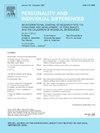Neural correlates associated with individual differences in temporal distancing and their association with existential meaninglessness
IF 2.6
2区 心理学
Q1 PSYCHOLOGY, SOCIAL
引用次数: 0
Abstract
Temporal distancing is a habitual self-regulation tendency involving reframing negative experiences by adopting a future-oriented perspective, which has been shown to facilitate mental health and may help alleviate feelings of existential meaninglessness. However, the relationship between temporal distancing and existential meaninglessness, and the underlying neuropsychological correlates, remains unexplored. To address this issue, 156 participants underwent resting-state functional magnetic resonance imaging (rs-fMRI). Measures of amplitude of low-frequency fluctuations (ALFF), fractional ALFF (fALFF), and resting-state functional connectivity (rsFC) were employed. Analyses revealed that both ALFF and fALFF values in the left ventromedial prefrontal cortex (vmPFC), as well as the functional connectivity between the left vmPFC and the right Crus II of the cerebellum, were negatively associated with temporal distancing. Moreover, negative correlations were observed between temporal distancing and existential meaninglessness. Mediation analyses further indicated that the neural indices (ALFF/fALFF values in the vmPFC and vmPFC-Crus II connectivity) were indirectly associated with existential meaninglessness through the mediating role of self-reported temporal distancing. These findings provide preliminary evidence for resting-state neural correlates that may reflect individual differences in temporal distancing and tentatively offer insight into the relationship between temporal distancing and existential meaninglessness from a neuropsychological perspective.
与时间距离的个体差异相关的神经关联及其与存在无意义的关联
时间距离是一种习惯性的自我调节倾向,涉及通过采用面向未来的视角来重新构建负面经历,这已被证明可以促进心理健康,并有助于减轻存在的无意义感。然而,时间距离和存在无意义之间的关系,以及潜在的神经心理学相关因素,仍未被探索。为了解决这个问题,156名参与者接受了静息状态功能磁共振成像(rs-fMRI)。采用低频波动幅度(ALFF)、分数ALFF (fALFF)和静息状态功能连通性(rsFC)测量。分析显示,左侧腹内侧前额叶皮层(vmPFC)的ALFF和fALFF值以及左侧vmPFC与右侧小脑II脚之间的功能连接与时间距离呈负相关。时间距离与存在意义感呈负相关。中介分析进一步表明,神经指标(vmPFC的ALFF/fALFF值和vmPFC- crus II连通性)通过自我报告时间距离的中介作用与存在无意义间接相关。这些发现为静息状态下的神经关联可能反映时间距离的个体差异提供了初步证据,并从神经心理学的角度初步探讨了时间距离与存在无意义之间的关系。
本文章由计算机程序翻译,如有差异,请以英文原文为准。
求助全文
约1分钟内获得全文
求助全文
来源期刊

Personality and Individual Differences
PSYCHOLOGY, SOCIAL-
CiteScore
8.50
自引率
4.70%
发文量
577
审稿时长
41 days
期刊介绍:
Personality and Individual Differences is devoted to the publication of articles (experimental, theoretical, review) which aim to integrate as far as possible the major factors of personality with empirical paradigms from experimental, physiological, animal, clinical, educational, criminological or industrial psychology or to seek an explanation for the causes and major determinants of individual differences in concepts derived from these disciplines. The editors are concerned with both genetic and environmental causes, and they are particularly interested in possible interaction effects.
 求助内容:
求助内容: 应助结果提醒方式:
应助结果提醒方式:


